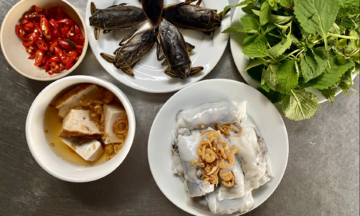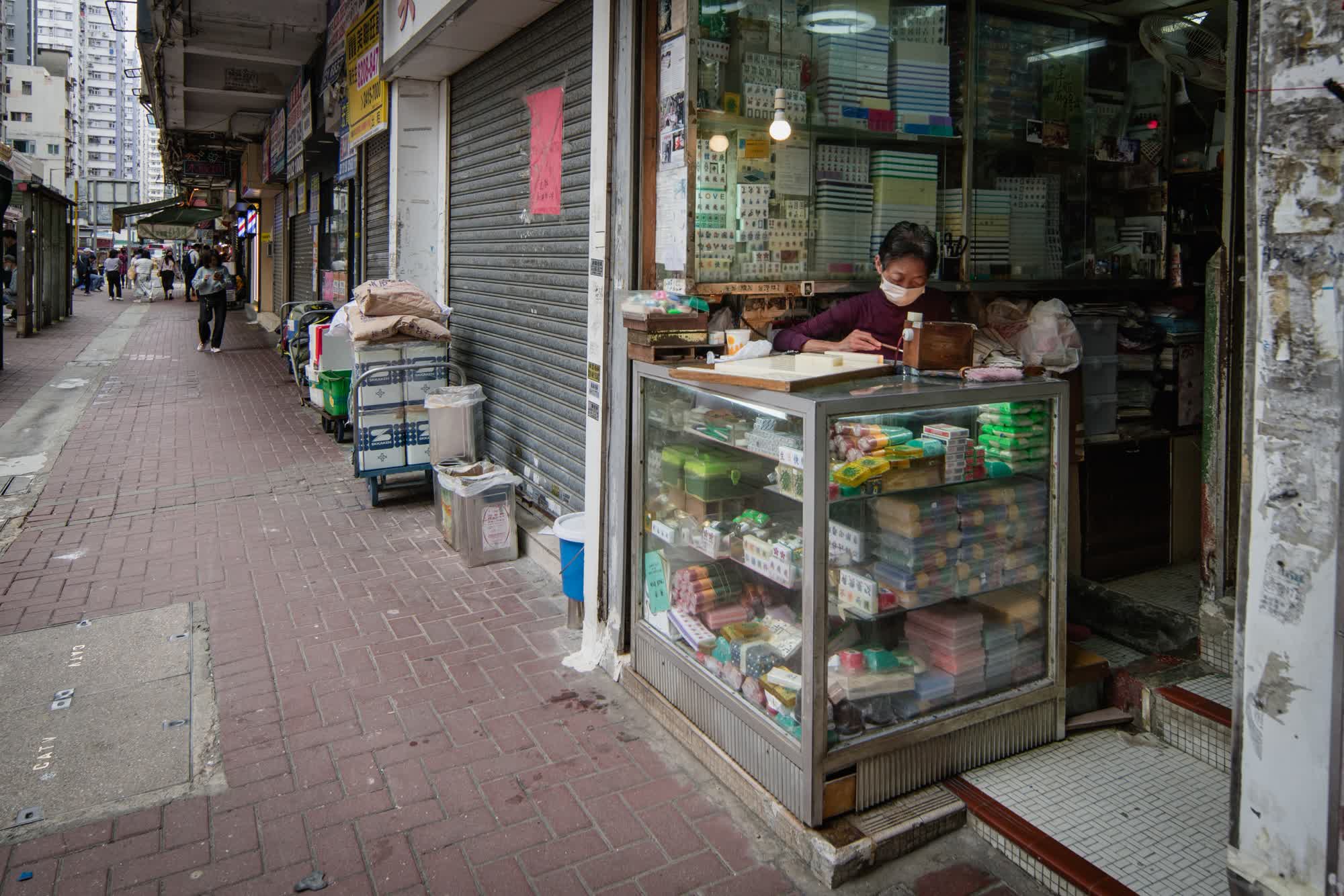 |
In the 1960s, Hong Kong had over 20 mahjong carvers and even a formal trade association. Now, most tiles are mass-produced in mainland China factories. In 2014, the Hong Kong government listed hand-carved mahjong making as an "intangible cultural heritage," but only a few artisans remain in the city, and Mei is the only female practitioner. |
Mahjong is a popular game throughout China and among Chinese communities worldwide. It’s played not just for entertainment but also holds cultural significance. Children often learn to play during Lunar New Year celebrations with their families, while older generations enjoy the game year-round. Traditional mahjong sets are often made of wood, ivory, or bamboo, meticulously cut, polished, carved, and painted by hand.
For over four decades, 68-year-old Ho Sau-Mei has dedicated herself to Kam Fat Mahjong, the shop her father founded in 1962.
The photo shows Mei’s mahjong shop tucked under a staircase in an alley less than 2 meters wide.
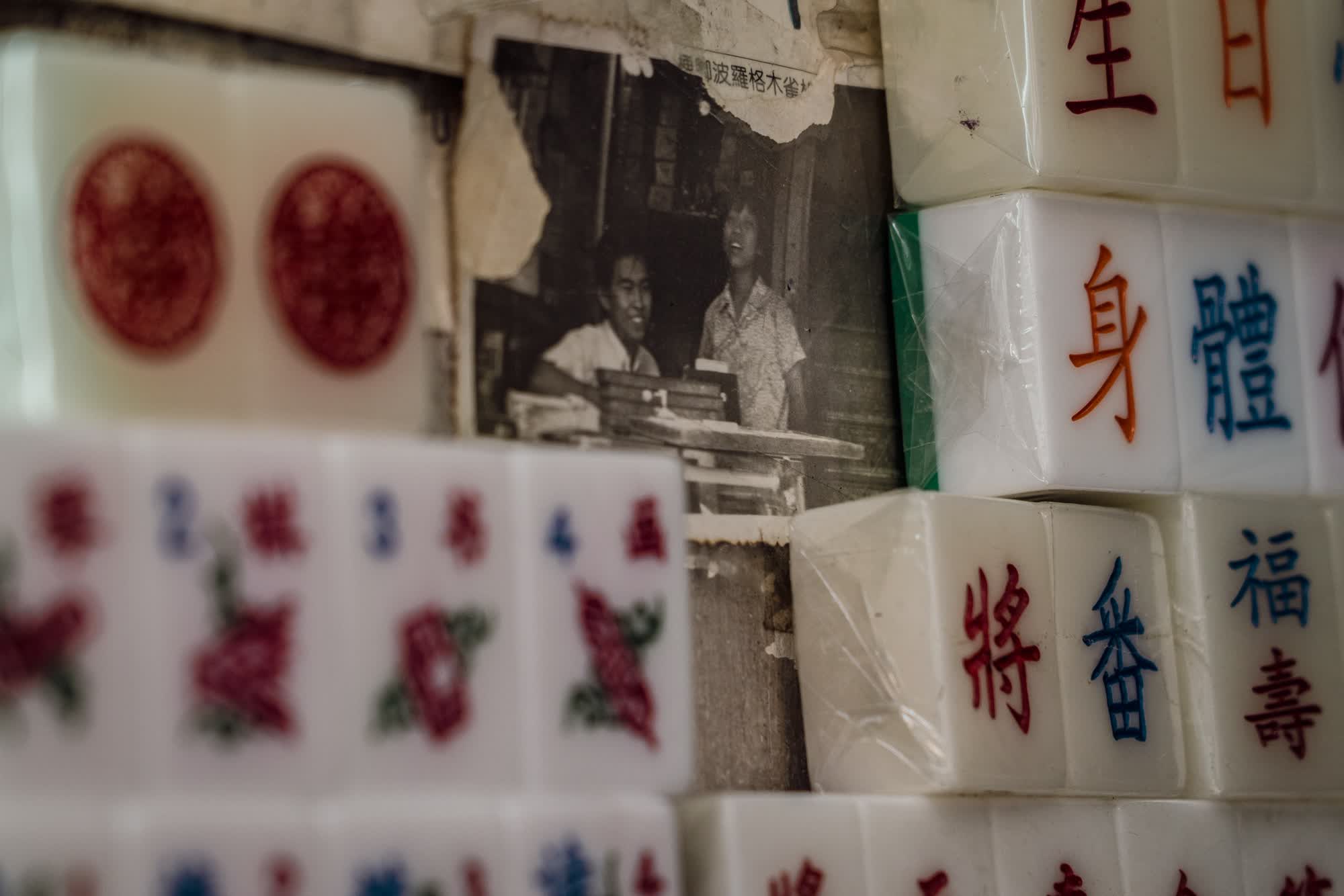 |
Before 10 a.m. each morning, Mei sits at her workstation, arranging a wooden tray of plastic tiles and preparing her specialized tools. |
Inside, dust-covered glass cabinets reach the ceiling, filled with old photos and various mahjong sets.
Mei started learning the craft at 13. In the 1970s and 1980s, artisans from mainland China came to Hong Kong to exchange techniques, contributing to a flourishing hand-carved mahjong industry.
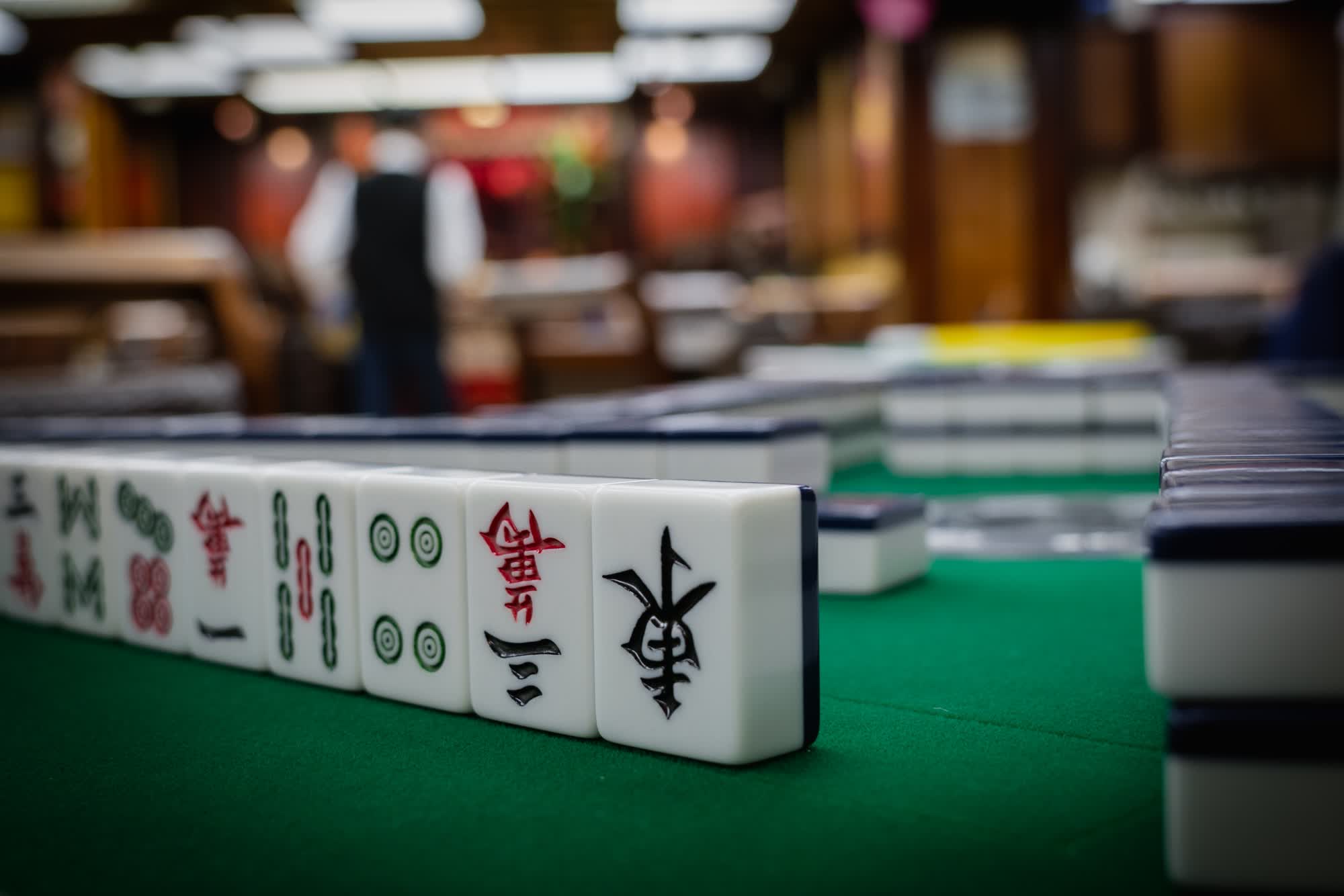 |
Behind her chair sits a small altar emitting a dim red light. A mahjong set rests in front of the altar. |
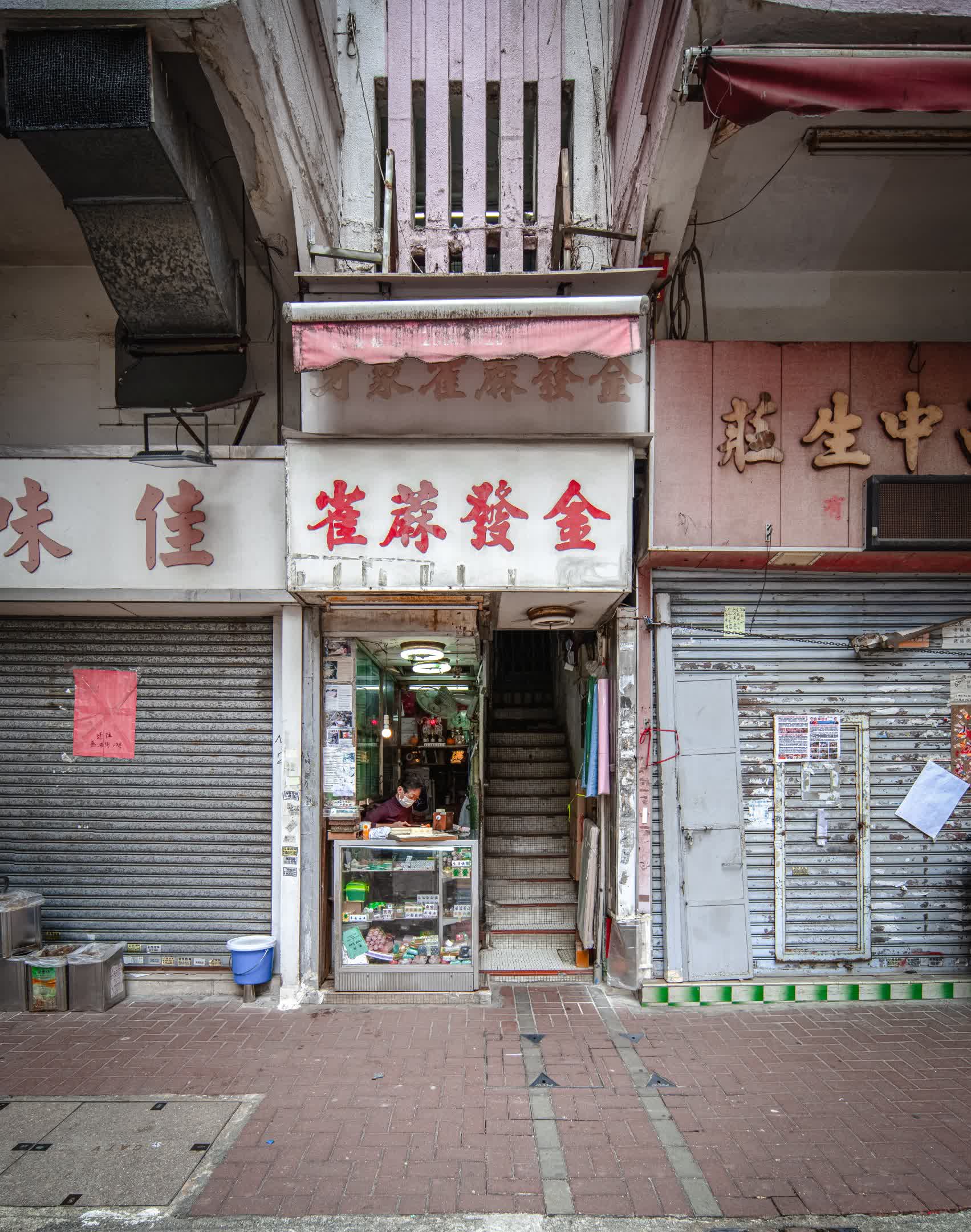 |
She uses a corkscrew-like tool to drill designs onto the tile faces. |
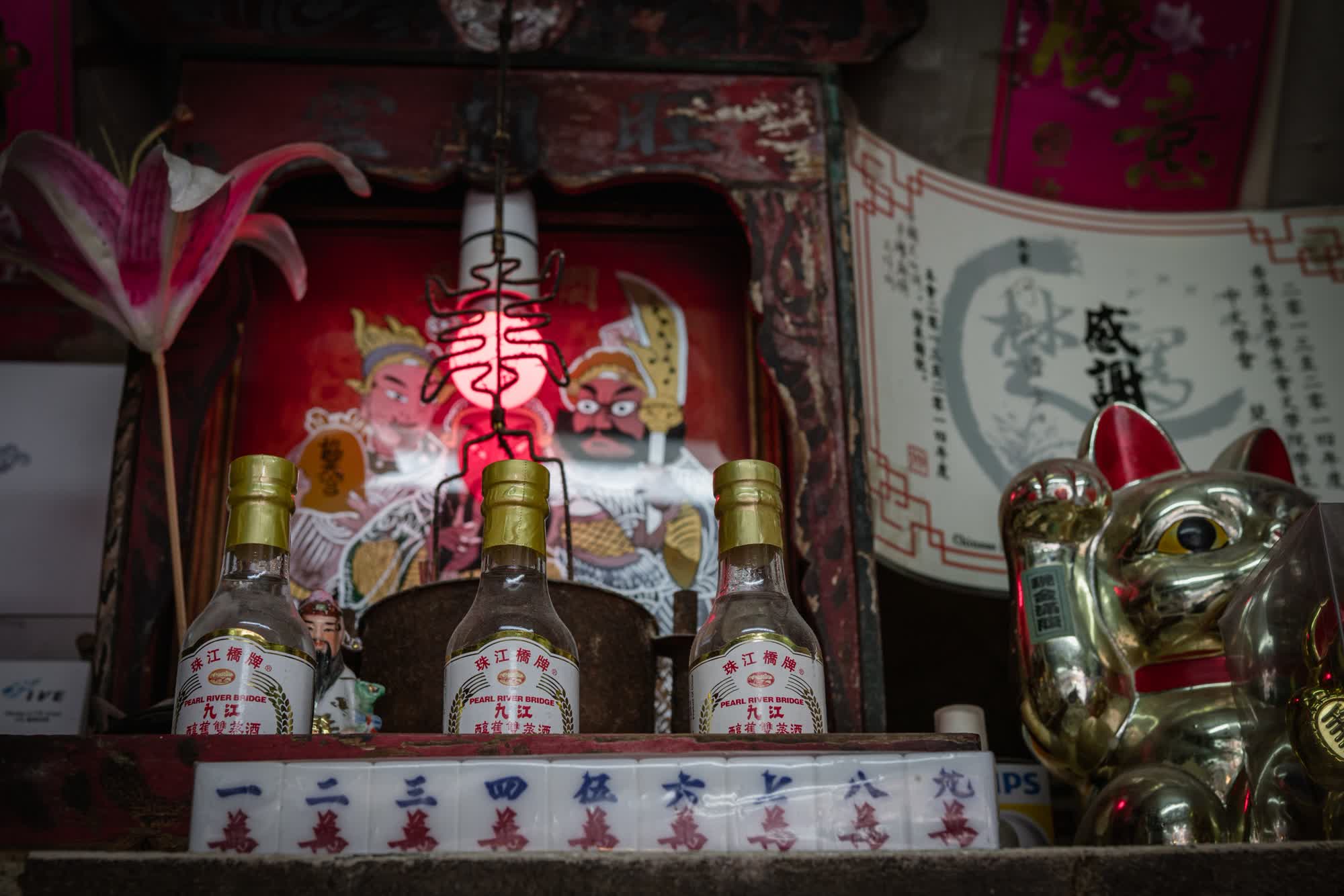 |
A licensed mahjong parlor, a few blocks from Mei’s shop, now uses tiles purchased from mainland China. |
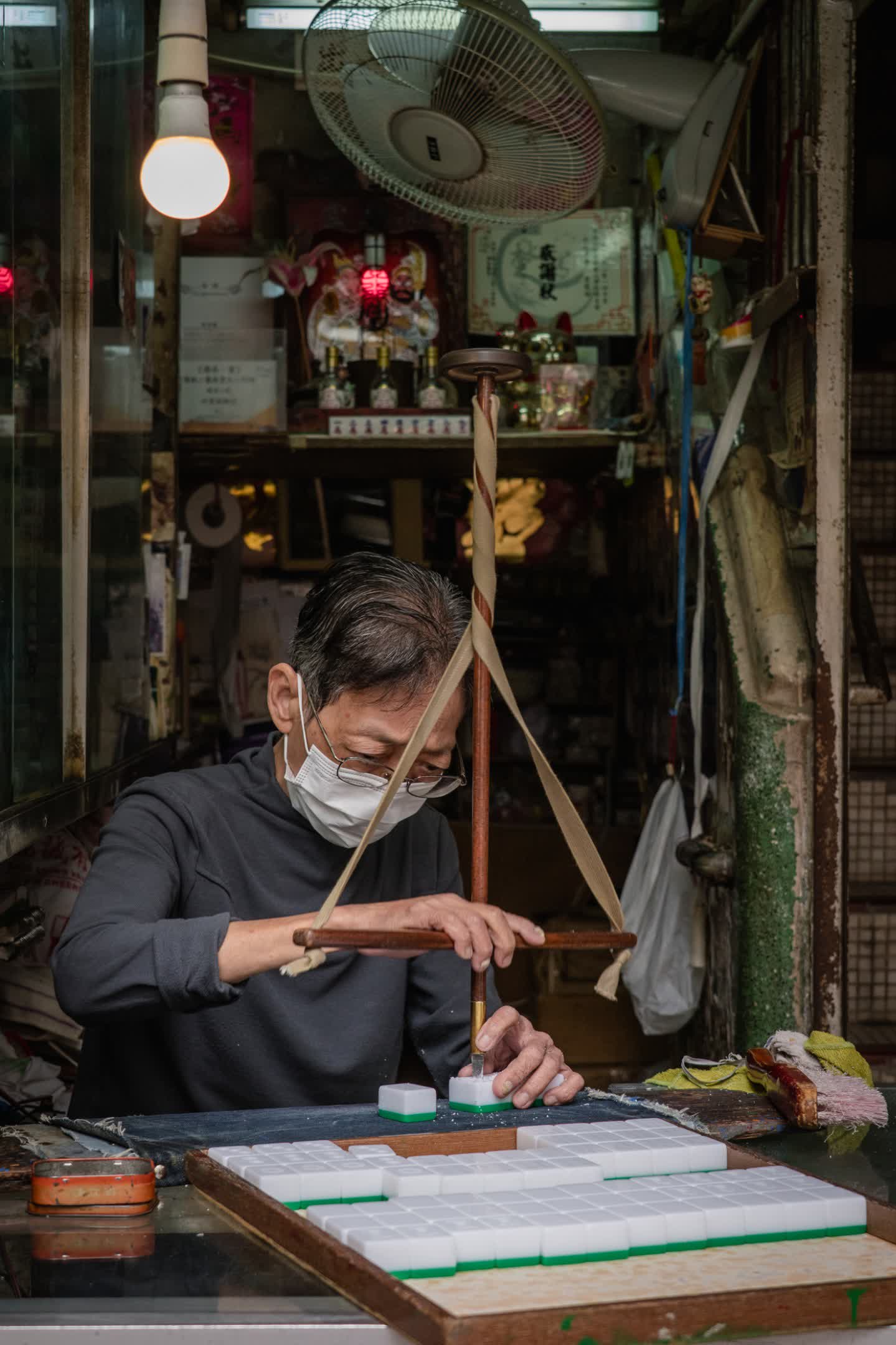 |
A mahjong artisan's shop on a Hong Kong street. Video: CNN. |
Each mahjong set contains 144 tiles, divided into suits like bamboo, circles, Chinese characters, winds (east, west, south, north), and special tiles like flowers, dragons, and seasons. Besides traditional tiles, Mei also creates innovative ones with various designs.
She uses traditional carving tools with different tips to etch each character and design onto the tiles, which she holds firmly between her thumb and middle finger.
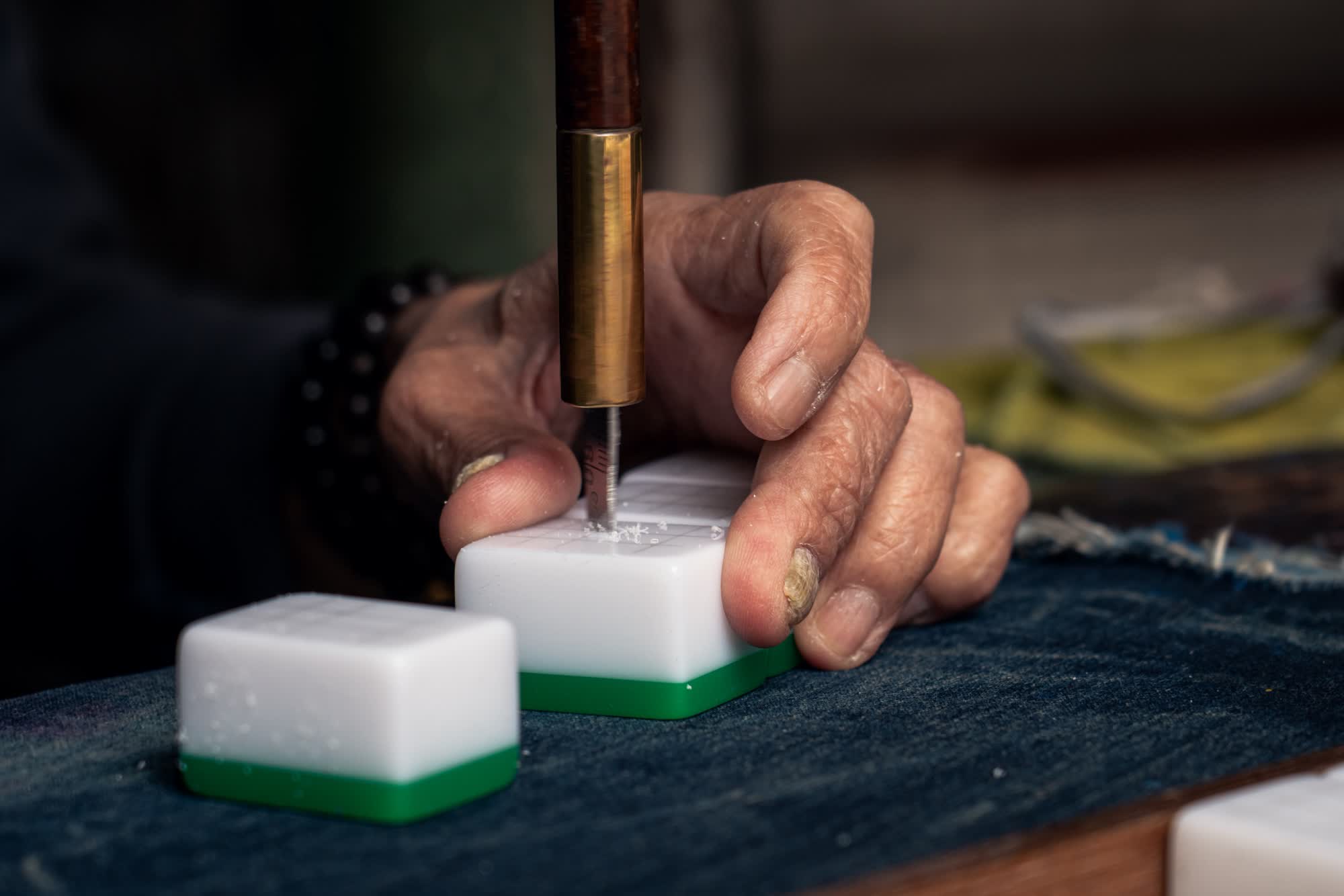 |
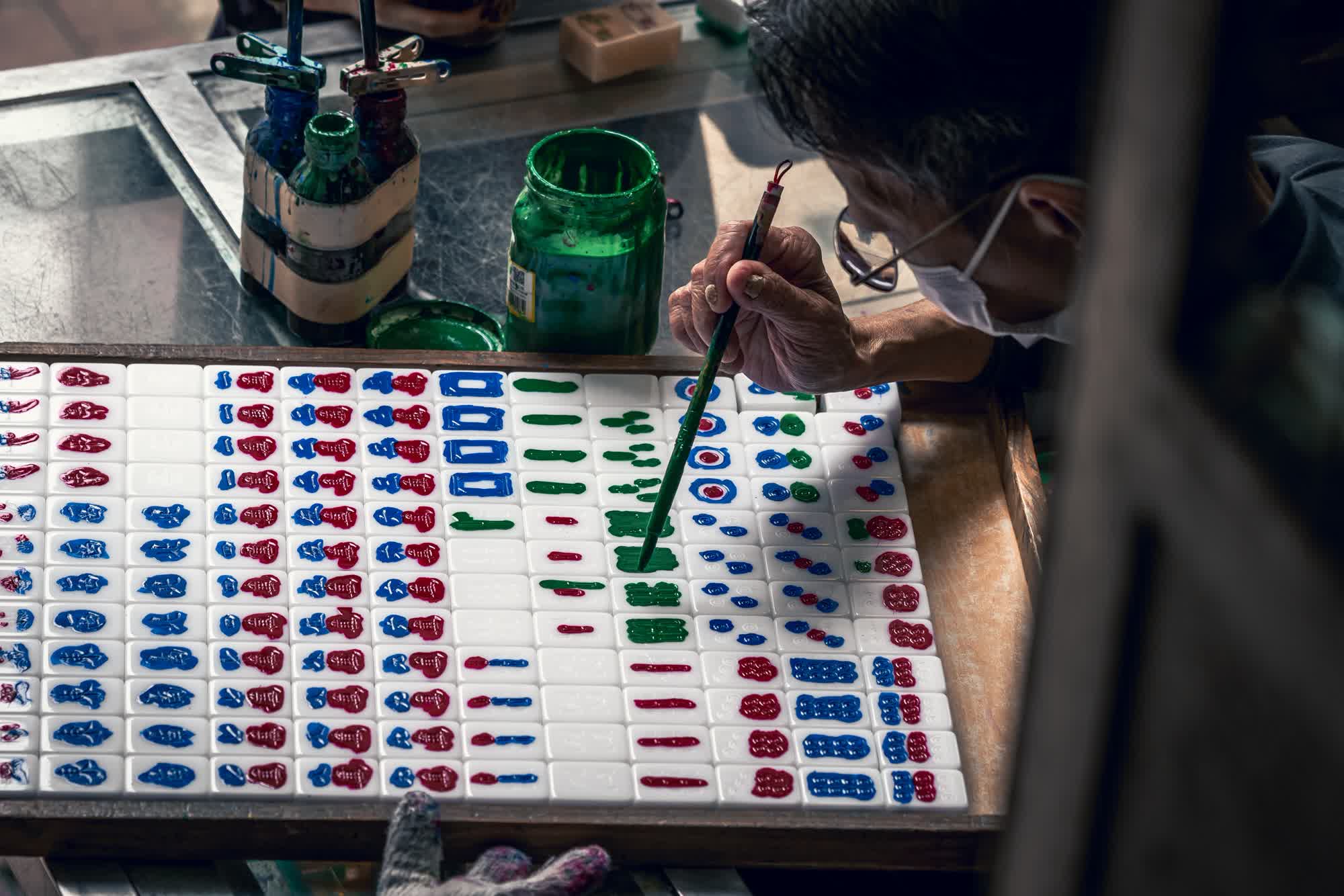 |
After carving, she paints the tiles, using well-worn jars of red, blue, and green paint.
At the end of the day, Mei finishes painting, leaving the tiles to dry. “I’m still a woman; I have to go home and cook, take care of the house," she says, adding that she spends her evenings resting, watching TV, and caring for her hands, weary from years of handling tools.
 |
Each handmade mahjong set takes 10 to 14 days to complete and costs around 245 USD (approximately 6.5 million VND).
Since Hong Kong's transition from a manufacturing hub to a financial center in the 1990s, the handmade mahjong industry has declined. Mass-produced sets now sell for as little as 70 CNY (around 250,000 VND) online.
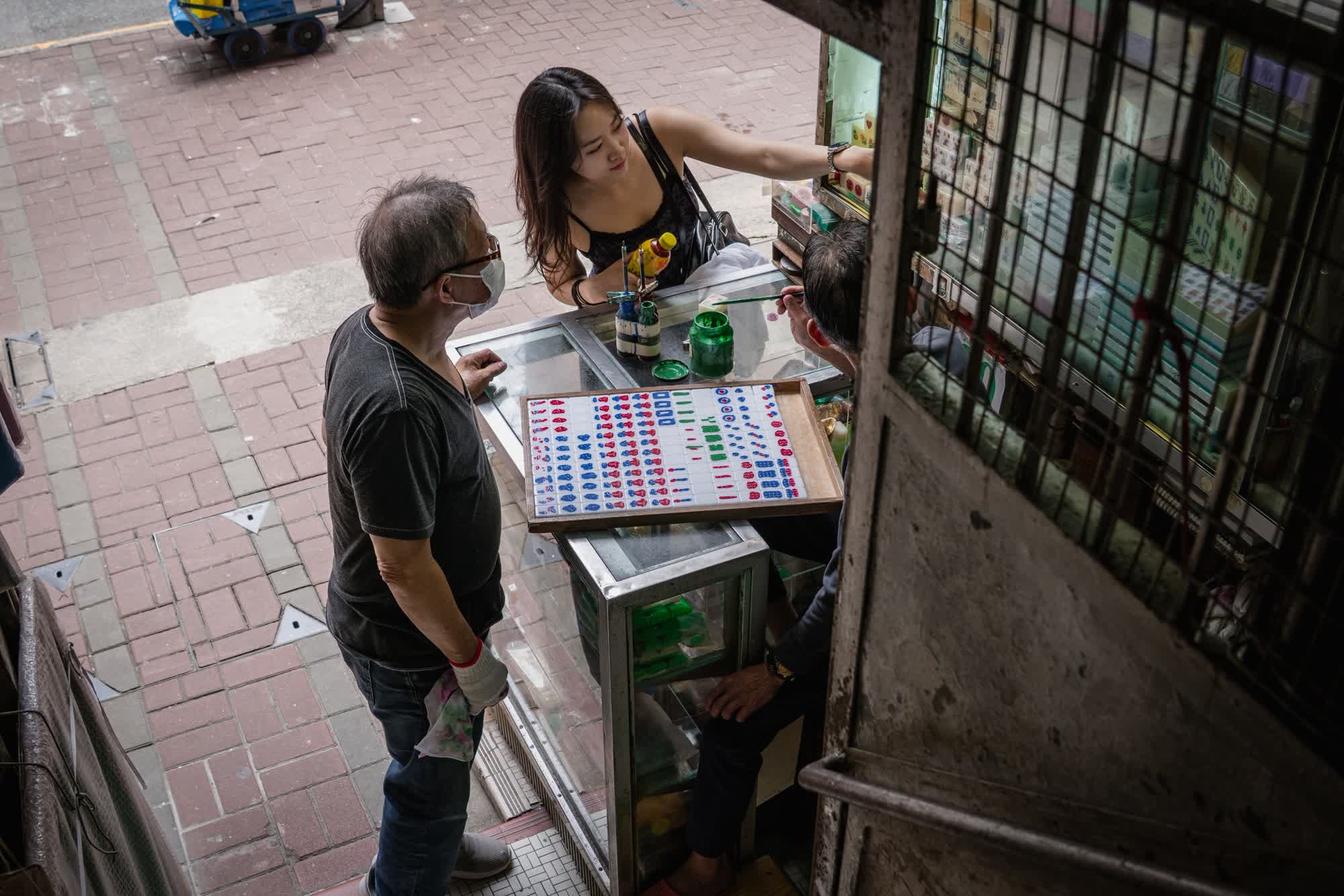 |
The shop has no online ordering system. Customers must call or visit in person. Mei records orders by hand in a worn notebook.
She now only works until around noon, no longer having the stamina for full days. She says she doesn't want to retire because she'd be bored and wouldn't know what to do.
During the day, a British customer calls to inquire about an order his wife placed a few weeks ago. Mei, with the help of a translator, locates the phone number in her notebook and confirms the set will be ready next week.
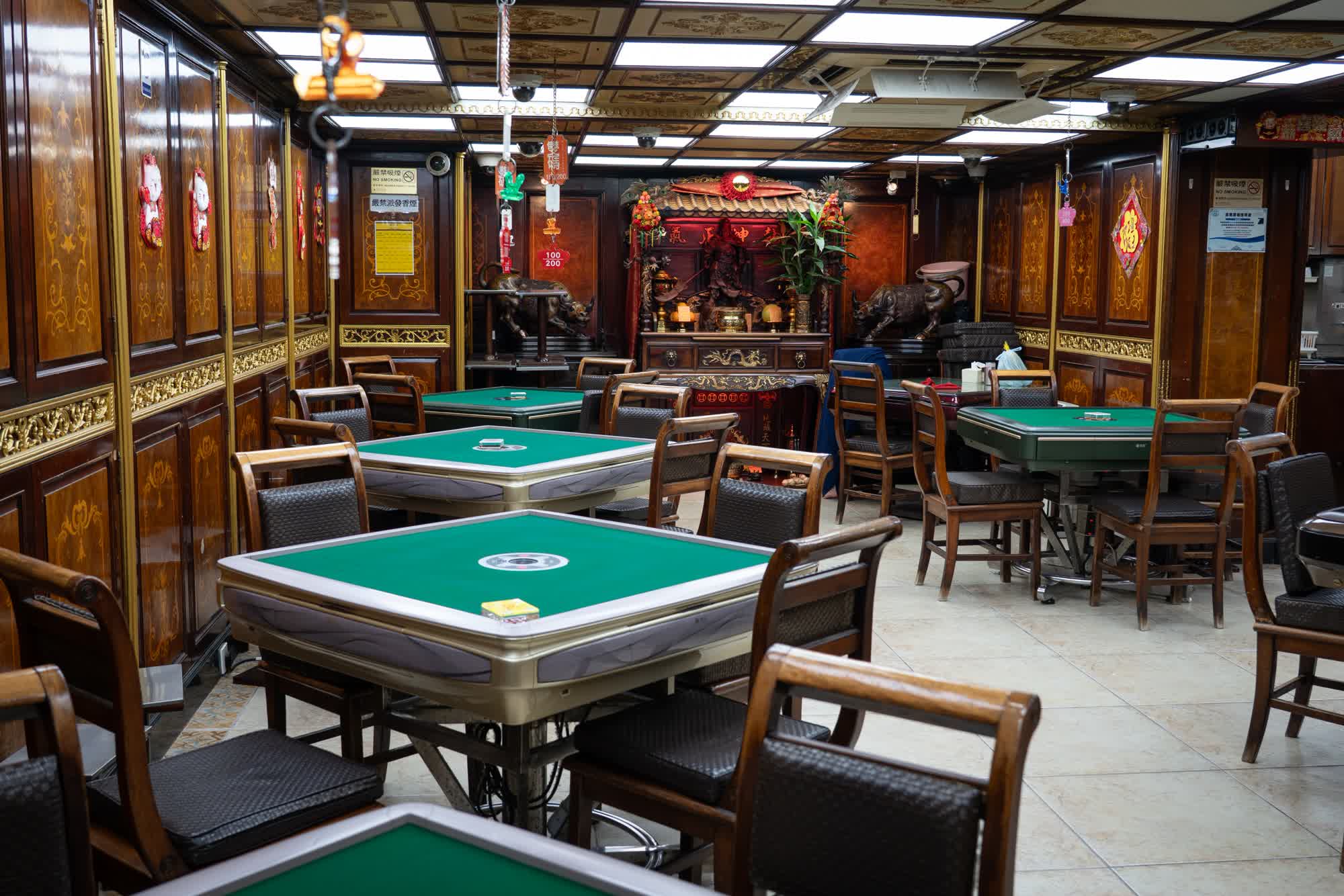 |
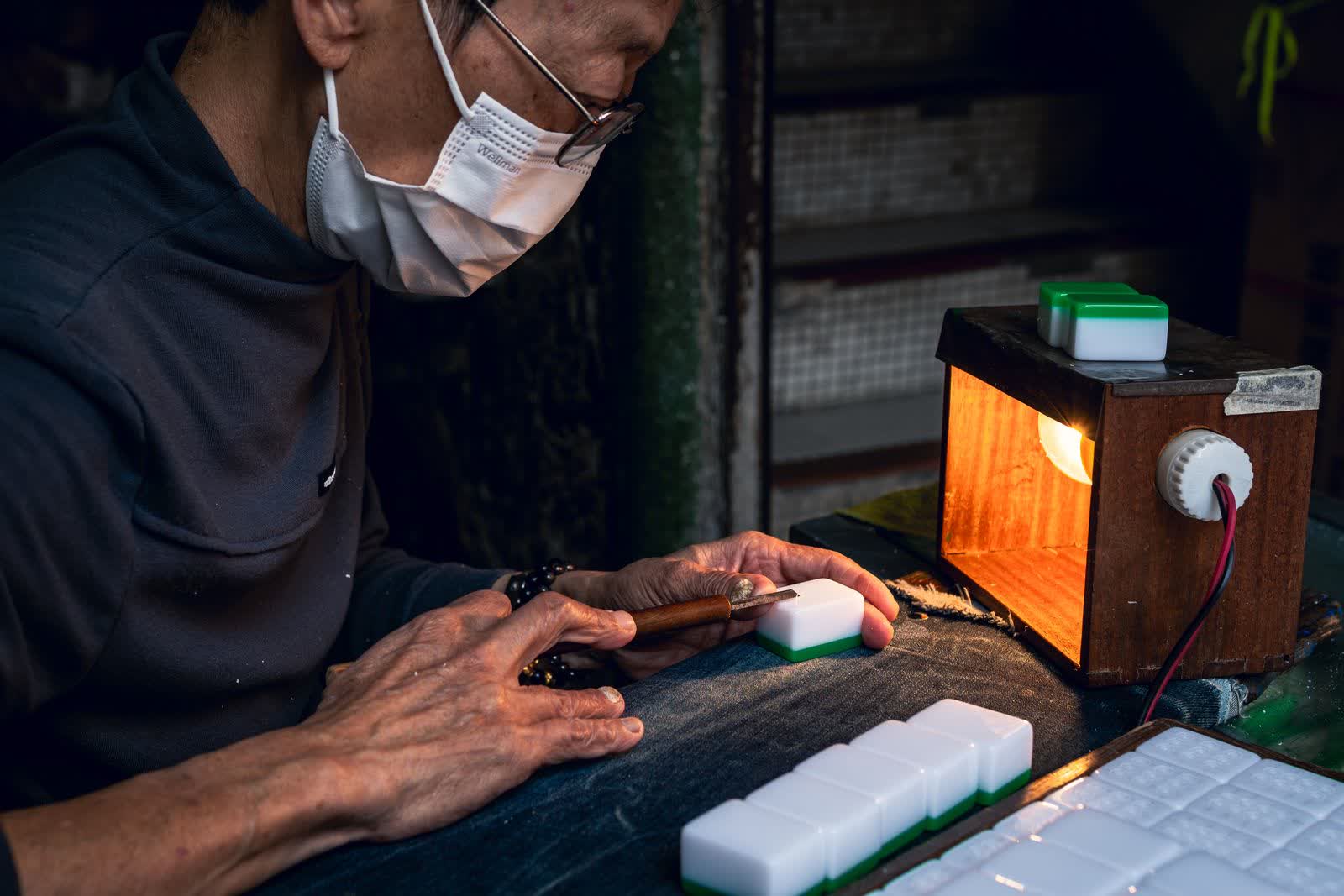 |
Mei used to play mahjong with her siblings when she was younger, but now she has less time, only occasionally accepting invitations from old friends.
Students and journalists still visit annually, keeping her craft in the public eye despite its decline. She has received apprenticeship offers from artists and cultural organizations, but she has declined, preferring to work at her own pace and in her own way. "I don't know how much longer I can do this," she says, "but as long as I can hold the tools, I will continue."
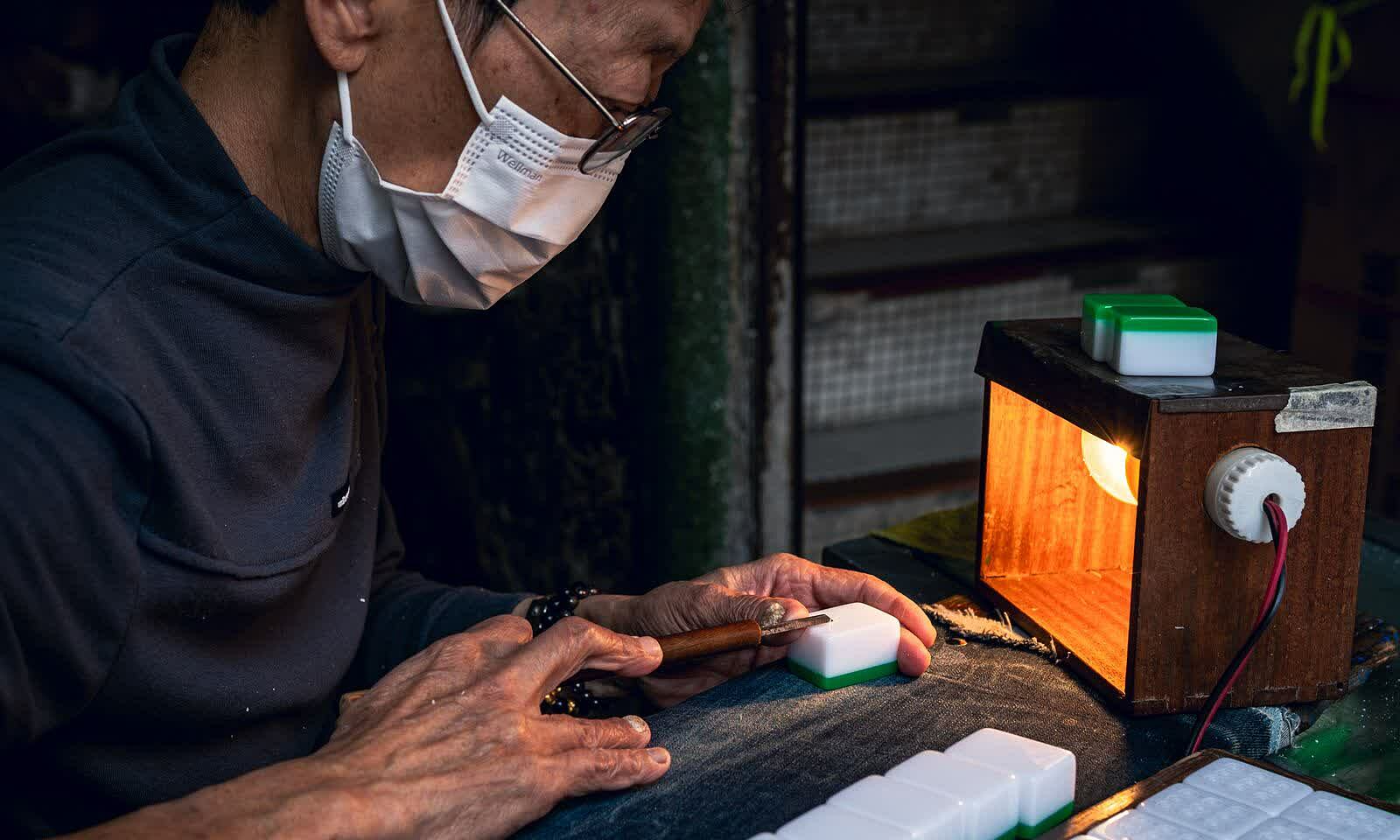 |
A mahjong artisan's shop on a Hong Kong street. Video: CNN.
Tuan Anh (From CNN)










